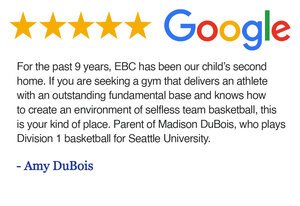Basketball dribbling is the act of bouncing a ball while moving in a given direction, with the main purpose of advancing toward a destination. It is one of the most important skills in basketball, as it allows players to move past defenders and shoot from anywhere on the court.
Dribbling can also be used for defensive purposes, such as to get past an opponent or to help maintain possession of the ball. Dribbling is a fundamental skill for all positions and players should know how to dribble with both hands, as well as with their dominant hand.
Here are five tips on improving your basketball dribble:
1. Keep your head up
2. Be aware of what's around you
3. Move your feet, not just your arms
4. Stay low to cut down on wind resistance
5. Practice!
There are many different types of dribbles and each one has its own purpose. For example, there are double-clutch dribbles and triple-clutch dribbles. The double-clutch is used for speed when attacking the basket while the triple-clutch is used for shooting or passing. It’s important to learn what each type of dribble does before trying them out in a game situation.
When learning how to improve your dribble, make sure you practice with one hand first before trying two hands out. This will help you develop muscle memory and get used to dribbling with only one hand before trying two!
Once you’ve mastered a single-handed dribble, try practicing with both hands at once! This will help increase your coordination and make sure your movements are fluid rather than jerky when performing this skill on court.
Hand position is an important part of a good basketball dribble. If your hands are in the wrong position, it can cause you to lose control of the ball or leave you vulnerable to steals. To improve your hand position, try these tips:
Keep your thumbs and index fingers together on both hands. This helps keep the ball from popping out of your hands between dribbles.
Hold your wrists straight when dribbling with either hand. Wrist movement can make it difficult for defenders to steal or strip the ball from you. It also prevents soreness or injury when you're playing defense against other players who use their hands on the ball when they try to get past you on offense.
Control the ball with all five fingers instead of just two (or three). The more contact points you have with the ball, the more control over it you'll have. For example, if you use two fingers while dribbling and someone hits those two fingers with their hand, then they could easily take away possession from you because they have more contact points than you do (assuming that both players' hands are similar sizes).
If you still have questions about dribbling, or would like to get a one-on-one session with one of our coaches, please feel free to reach out to us on this website. We look forward to transform your or your kids’ dribbling skill!


















